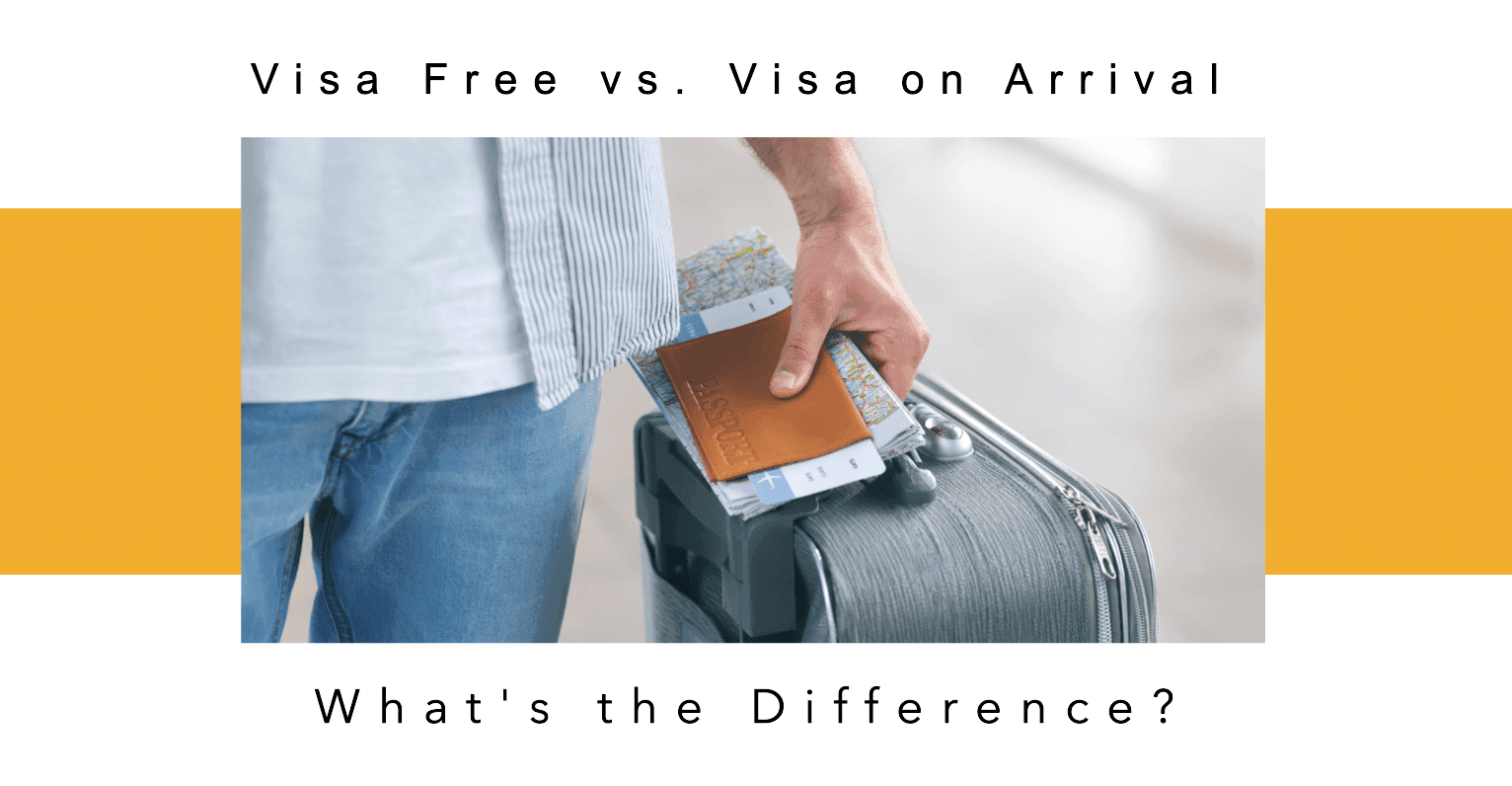Travelling to different countries can be an exciting and enriching experience, but it often requires the proper documentation to ensure a smooth entry. Two common terms that you may come across when planning your travels are “visa-free travel” and “visa-on-arrival.”
Understanding the difference between these two concepts is essential for any traveler, as it can impact your planning process and overall travel experience. In this blog post, we will delve into the differences of visa-free travel and visa-on-arrival.
By the end of this article, you will have a clear understanding of these terms and be better equipped to make informed future travel plans.

Understanding Visa-Free Travel
Visa-free travel refers to the ability to enter a foreign country without obtaining a visa in advance. Many countries have established agreements allowing citizens of certain nations to visit for a specified period without needing a visa.
The purpose of visa-free travel is to promote tourism, business, and cultural exchanges between countries. Popular examples of visa-free travel destinations include Thailand, Singapore, and most European Union countries.
There are several advantages to visa-free travel. Firstly, it eliminates the need to go through the visa application process, saving time and effort. It also reduces costs, as visa fees can be substantial. Visa-free travel provides more spontaneous and flexible travel opportunities, allowing travellers to make last-minute plans without the hassle of obtaining a visa.
However, it’s important to note that visa-free travel often comes with limitations and restrictions, such as a maximum duration of stay or restrictions on employment.
How about a Visa on Arrival?
Visa on arrival is a process where travellers can obtain a visa upon arrival at their destination country’s immigration checkpoint. Unlike visa-free travel, which grants entry without any prior paperwork, visa on arrival requires travellers to complete certain formalities upon arrival.
Countries offering visas on arrival typically require applicants to present necessary documents, such as a valid passport, a return or onward ticket, and proof of sufficient funds for the duration of their stay.
Visa on arrival offers advantages such as convenience and flexibility. Travelers can decide to visit a country at the last minute and obtain their visa upon arrival, avoiding the need for advance visa applications. This option is particularly useful for spontaneous travellers who may not have planned their trip well. However, it’s important to note that visas on arrival may not be available for all nationalities, and the process can still involve waiting in immigration queues and providing necessary documentation.

Key Differences between Visa-Free Travel and Visa on Arrival
- Eligibility criteria: Visa-free travel is determined by bilateral agreements or the nationality of the traveller, while visa on arrival often depends on the traveller’s nationality and specific requirements set by the destination country.
- Duration of stay: Visa-free travel may impose restrictions on the maximum length of stay, while visa on arrival usually grants a specific duration of stay, which can vary from country to country.
- Purpose of travel: Visa-free travel is generally suitable for tourism or short-term visits, while visa-on-arrival can accommodate various purposes, including tourism, business, or transit.
- Flexibility and convenience: Visa-free travel offers greater flexibility and spontaneity, while visa-on-arrival provides a middle ground between visa-free travel and obtaining a visa in advance.
- Cost implications: Visa-free travel eliminates visa fees, while visa on arrival may require payment of visa fees upon arrival.
Factors to Consider When Choosing Between Visa-Free Travel and Visa on Arrival
When deciding between visa-free travel and visa on arrival, consider the following factors:
- Travel destination: Research the entry requirements of your desired destination to determine whether it offers visa-free travel or visa on arrival.
- Duration of stay: If you plan to stay for an extended period, check if visa-free travel allows sufficient time or if visa on arrival offers a longer duration of stay.
- Purpose of travel: Consider the purpose of your visit, as visa regulations may vary depending on whether you are travelling for tourism, business, or other purposes.
- Personal preferences and priorities: Assess your willingness to go through the visa application process in advance, your need for flexibility, and your budgetary constraints.
Summary
Understanding the difference between visa-free travel and visa-on-arrival can save you time, stress, and potentially even money during your trip planning. While both options eliminate the need for a pre-obtained visa, they have distinct advantages and drawbacks.
For quick getaways or destinations with straightforward processes, visa-free travel offers the ultimate convenience. However, it may come with limitations on stay duration and entry points.
On the other hand, a visa on arrival can be a viable option for flexible travel plans or countries with complex visa requirements. However, be prepared for potential delays, additional fees, and the possibility of visa denial at the border.
Ultimately, the best choice for you depends on your specific needs and the regulations of your chosen destination. Before your trip, remember to research and double-check the latest visa information directly with the embassy or consulate.







